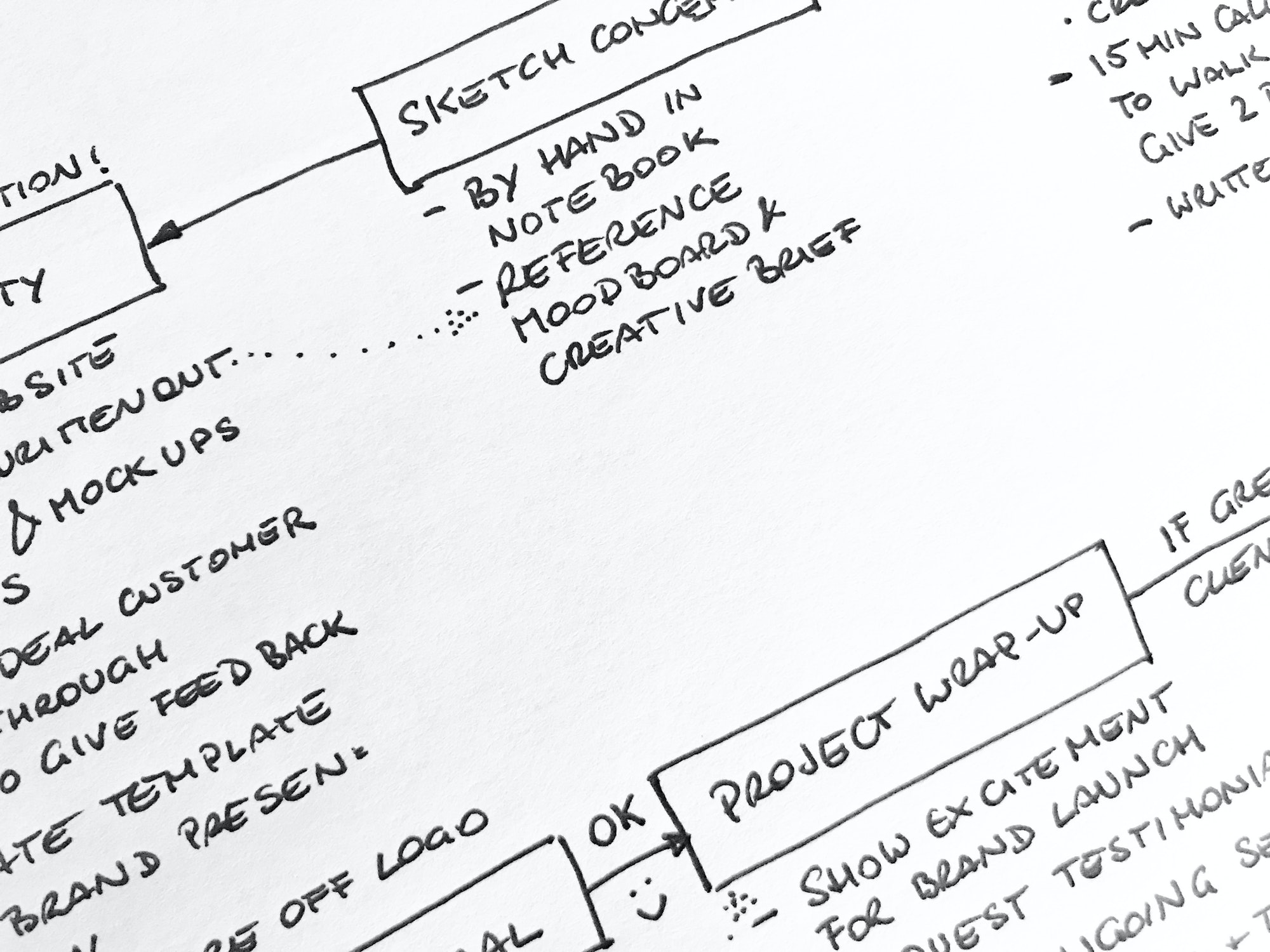You’ve decided that your website needs a makeover. Now you need a website designer who will turn your ideas into your dream website. But how will the designer or design agency know what you want? How will they estimate the cost of such a design? The answer lies in the web design brief.
The design brief will present your vision of intangible words. It will give guidance to the design team and help you establish a successful and productive collaboration.
The more comprehensive and detailed the design brief is, the better will the designer understand what you want. Maybe writing a web design brief isn’t the fun part of web design, but it is necessary.
If you want to get that killer website, you need to start with a killer web design brief. You don’t need any previous experience with writing the brief. Just take the following steps and you’ll craft a web design brief like a pro.
1. Get Down To Details

The design team can’t read your mind. Despite their experience, they can’t know what you expect them to do without you telling them.
Be explicit in the brief and list every detail that explains your desires. Designers will be grateful for every piece of information you provide.
Don’t worry if you are unsure about certain ideas. Include them in the brief and the design team will let you know if that’s possible or not.
The brief is just the foundation. You can easily make additions or reductions during the design process.
However, to get the website you want, you have to be specific about how you envision it.
2. Introduce Your Business
Your brand identity plays a key role in your website design. The design needs to reflect your brand and what it represents. That’s why you need to familiarize the design team with your company.
The Information You Should Include In The Brief Are:
- The name of the company.
- Your current website address.
- When your company was founded.
- The location of your company.
- What kind of products/services you sell or provide.
- Your value proposition.
- Your mission and beliefs.
- Key information about your niche.
- Key information about your industry trends.
This type of information will show the designers what they can work with. For example, designers can emphasize the long tradition of a company that exists for 50 years. Or, they can focus on your value proposition.
3. Present Your Target Audience
The world of business revolves around customers. Therefore, your web design must be oriented towards your target audience.
In the design, list the essential information about your target audience. Thus, the designers will know how to navigate the design towards their interests.
Share The Following In The Brief:
- Target audience’s demographics (gender, age, location, etc.).
- Target audience’s interests, likes, and dislikes.
- Target audience’s shopping habits.
- Where they spent the most time on your current website (product page, blog, etc.).
- For what reasons do they visit your website (to purchase a product, download an ebook, etc.).
4. Share Your Goals
What is the purpose of your new web design? Be specific about your goals. Designers will approach this project primarily based on what you plan to achieve with the redesign.
Some Of The Goals You Can Aim For Are:
- Boosting your website traffic.
- Driving more traffic to your website.
- Increasing the conversion rate.
- Attracting a certain type of customers.
- Putting the focus on certain information.
- Enticing the customers to contact you.
5. Explain Your Design Vision

Now, it is time for the creative part. Put every doable idea onto paper. Describe what kind of design you want.
Moreover, explain what kind of impression your website needs to make. Should it look professional? Stylish? Fun? Educational?
Include color schemes, fonts, icons, and visuals that you like.
For inspiration, provide links or names of websites whose design you admire. Show the designers what you like.
You can also include the website designs you don’t like. Just to make sure that the designers don’t go in that direction.
If there are certain parts of your current website design you want to keep, state that in the brief. Or, if there is some design element that you want to be modified not completely changed.
Don’t shy away from being detailed and specific.
6. Introduce Your Competitors
Providing information on your competitors can help the designers a lot. They will be able to understand whom they need to overshadow.
The Questions About Competitors You Should Answer In The Brief Are:
- Who are your main competitors?
- What are their strengths and weaknesses?
- What do you like and dislike about their web design?
- Are there any functionalities on their websites that you want to incorporate on yours?
7. Provide Information On The Technical Aspect
The least interesting part of writing the design is probably the technical aspect of it. Let the designers know about some basics of the website technicalities such as:
- Your current web host (information about the host and the package you have).
- Any restrictions for accessing parts of your website.
- Which languages will be available on your website.
8. Explain Your Content Plan
Dedicate a section to your content plan. Explain the content you have or want to have on your website.
Will you use the same content you have now or do you want to start from scratch?
The designers need to know the length and amount of the content they’ll need to work with. The whole design depends on the content.
9. Provide An Indication Of Your Budget And Deadline
You don’t need to know the exact budget and timeframe. But you should provide an estimate.
The budget you have at your disposal as well as the deadline are crucial for estimating the cost. These two factors also influence what the design team can and can’t deliver.
Answer The Following Budget & Timeline Questions In The Design Brief:
- How much you can spend on the design.
- Your ideal go-live date.
- Timeframe for certain design elements (for example, if another company is designing the logo when it will be finished, or when your new content will be finalized).
10. Don’t Forget About Web Design Brief Don’ts

In addition to including the aforementioned information, you need to pay attention to how you write the brief. Without comprehensible and clear writing, all your efforts can be in vain.
Try To Avoid The Following When Writing The Brief:
- Jumping from one topic to another.
- Long sections.
- Repeating the same ideas over and over again.
- Including information that doesn’t influence the design.
- Writing an essay-long brief.
- Not proofreading or editing the brief.
If you are unsure about the quality and readability of the brief, you can hire a writing service. They can get your brief in order and make it spotless.
Final Thoughts
Every great collaboration starts with good communication. The brief will ensure that you timely communicate your goals, needs, and desires. When you set such a strong foundation, the design team and you can easily figure out the rest.
Follow these steps and you’ll write a design brief that can start a straightforward collaboration. With all the relevant information included in the brief, there will be no room for misunderstandings.
Author’s bio. Jessica Fender is a copywriter and blogger at GetGoodGrade with a background in marketing and sales. She enjoys sharing her experience with like-minded professionals who aim to provide customers with high-quality services.
Share at:ChatGPTPerplexityGrokGoogle AI






